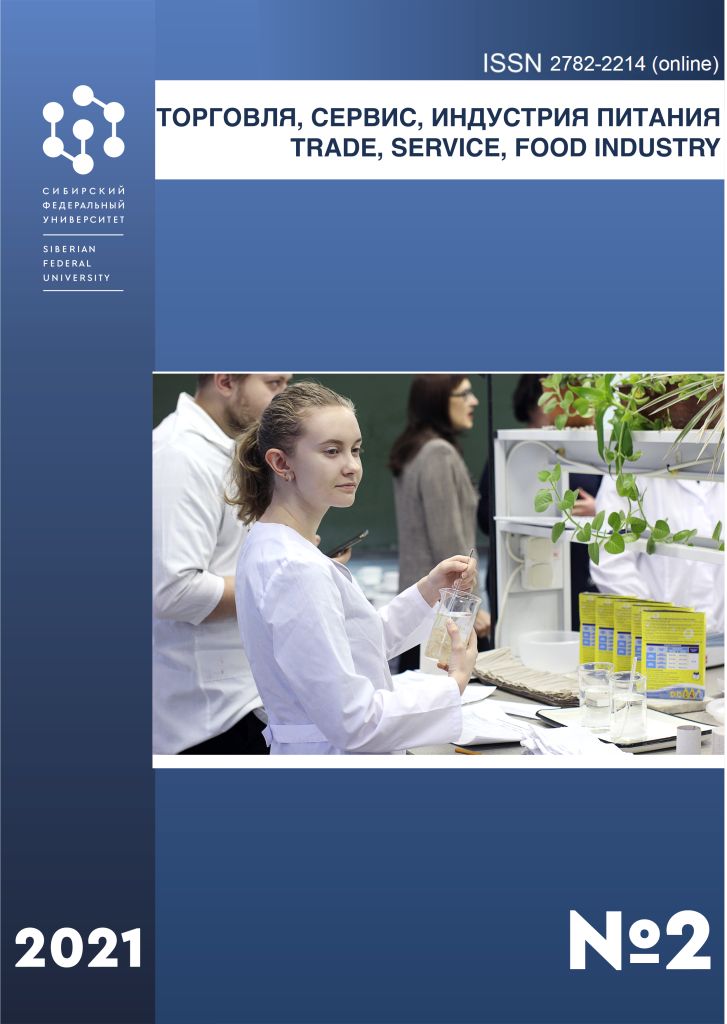Russian Federation
UDC 37
The article examines the factors that have a significant impact on the efficiency of resource potential management of higher education institutions. The positive impact of which ensures competitiveness and performance. The aim of the study is to analyze the study of the external and internal environment factors and the compilation of their classification. The multiplicity of studies and different approaches is of interest to this problem. For the study, such methods were used as analysis of the literature on the relevant topic, comparison, contrast. The results of the study will reduce the risks for identifying opportunities and reserves the growth of educational organizations. The scientific contribution of the author lies in the fact that the studied experience can be used and applied in the process of carrying out educational activities.
resources, resource potential, management, market of educational services, external and internal factors, environment, educational environment, types of factors, management efficiency, quality of education
1. Matveeva, E.S. (2019). The external environment of the educational organization as an object of management. Scientific trends: Pedagogy and psychology. Collection of scientific papers, based on the materials of the international scientific and practical conference on February 4, 2019 Ed. TsNK MOAN. 29-31.
2. Artemieva, M. V., Kuznetsov, V. P. & Tsymbalov, S. D. (2017). Economics of education Artemieva. Nizhny Novgorod. 193 p.
3. Drucker, P. (1992). Market: how to become leaders. Moscow. Progress.
4. Shvakova, O.N. (2011). Assessment of the level of use of regional educational potential as a resource for the development of the territory. Barnaul. 24 p.
5. Perevalova, A. A. (2004). Formation of the creative potential of university students (At the initial stage of training). Kemerovo. 210 p.
6. Rudenko, A.N. (2018). External and internal factors of the formation of the intellectual potential of modern Russian students. Humanities, socio-economic and social sciences. Krasnodar. Science and education. 6-7. 77-81.
7. Skoblyakova, I.V. & Semenova E.M. (2010). Intellectual potential of students and its formation at the university. Materials of the IX International scientific-practical conference "Actual problems of business education". April 8-9. Minsk.
8. Lapshin, V. A. (2013). Human potential of youth as a source of socio-cultural changes. Moscow. 13.
9. Zakirova, D. F. (2006). Assessment of the educational potential of a higher educational institution based on the qualimetric. Izhevsk. 209 p. 11.
10. Zayarnaya, I.A . (2015). Internal factors affecting the competitiveness of universities. Access mode: http://sci-article.ru/stat.php?i=1445946721
11. Molochnikov, N. R., Reutova, I.V. & Lobovskaya, T.A. (2004). Competitiveness of educational institutions: key factors of success. Successes of modern natural science. 8. 134-135. URL: http://natural-sciences.ru/ru/article/view?id=13342 (date accessed: 06.10.2019).
12. Svekatovski, R., (2012). Strategic Priorities for Ensuring the Competitiveness of Higher Education Institutions in the Market of Educational Services in the Context of Globalization. St. Petersburg. Polytechnic. 132-133.
13. Zhdankina, I.Yu., Smirnov, A.N. & Shamin E.A. (2018). Preconditions and factors affecting the competitiveness of educational services in higher education organizations. Vector of Science TSU. 4. 30-32.
14. Terentyeva, T.V. & Kulakova, M.N. (2012). Factors affecting the effectiveness of educational services of the university, and modern society. Modern problems of science and education. 5. URL: http://science-education.ru/ru/article/view?id=7123 (date accessed: 06.10.2019).
15. Queen, T .P. (2019). Methods for analyzing the factors of self-development of a municipal formation. Regions of Russia: modern economic situation. URL: http://econf.rae.ru/article/6443 (date of access: 06.10.2019).
16. Garashchuk, E. V. & Kutsenko, V.I. (2014). Resource potential of higher education is an important factor in improving its quality. Russian academic journal. 27. 1. 87-89.
17. Astafurova, I. S. & Antonenkova S. Yu. (2014). Assessment of methods of forming a system of indicators of organizations' activity. Economics and Entrepreneurship. Moscow. VSUES.
18. Grin, A.M. (2009). Management of resource provision of a modern university in the context of organizational changes. Novosibirsk. 43 p.
19. Karapetyan, K.Yu. (2009). Resource support for the modernization of higher professional education. Moscow. 28 p.
20. Mishchenko, M. V. (2011). The method of systematic assessment of the effectiveness of using the entrepreneurial potential of the university. Vladivostok. 25 p.
21. Belinskaya, M. N. (2012). Factors of assessing the competitiveness of state universities. Bulletin of SamSU. 1 (102). 20-26.
22. Mora. J.-G. (2014). University Third Mission: Good Prac tices from Developed and Developing Countries. BAL TIC SEA FORUM. University Cooperation in the Baltic Sea Region Turku, 2nd of June 2014. Access to the electronic resource http: //www.centrumbalticum. org / sites / default / files / user_uploads / jose-gines_mora_bsfturku-jgm.pdf (Date accessed: 12.12.2015)
23. Suslova, Yu. Yu., Smolentseva, L.T., Nechushkina, E.A. & Ivanova, L.V. (2015). Integration Processes in Trade Sector. Mediterranean Journal of Social Sciences. 6(2). 145-149 (ISSN:2039-9340).
24. Shcherbenko, E. V., Suslova, J. J. & Ivanova, L. N. (2016). Improved Techniques for Estimating Living Standards of the Population: A Case Study of the Siberian Federal District. International Journal of Applied Engineering Research. 11(8). 5469-5473.
25. Voloshin, A. V., Suslova, Yu. Yu., Baguzova, L.V., Batraeva, E.A. & Ananeva, N.V. (2018). Current state, tendencies and peculiarities of development in higher education: the case of Russia. European Research Studies Journal. 21(4). 502-511.
26. Barbour, M. K. (2013). The landscape of K-12 online learning. Examining what is known. In: M. G. Moore (Eds.), Handbook of distance education. 3rd ed. 574-593.
27. Deming, D. J., Goldin, C., & Katz, L. F. (2012). The for-profit postsecondary school sector: Nimble critters or agile predators? Journal of Economic Perspective., 26(1). 139-164.
28. Meyer, K. A. (2003). Face-to-face versus threaded discussions: The role of time and higher-order thinking. Journal of Asynchronous Learning Networks. 7(3). 55-65.
29. Romero, C. & Ventura, S. (2010). Educational data mining: a review of the state of the art. IEEE Transactions on Systems, Man, and Cybernetics, Part C (Applications and Reviews). 40(6). 601-618.








